 After a long cuddle on the sofa, Napster and Ericsson have announced a global partnership to offer a fully integrated new digital music service aimed at mobile phone customers around the world.
After a long cuddle on the sofa, Napster and Ericsson have announced a global partnership to offer a fully integrated new digital music service aimed at mobile phone customers around the world.
The service – yet to be given a snappy name – will combine elements of Napster’s popular PC offering and Ericsson’s personalised music service and serve up iTunes-like song downloads with a monthly subscription plan.
Scheduled to go live in Europe over the next 12 months, the service “accommodates mobile operator participation in all revenue streams” and will initially be offered to operators in selected markets in Europe, Asia, Latin America and North America.
“Ericsson’s world-leading wireless and telecommunications solutions experience, along with their exceptional client base, make them the ideal partner to deepen Napster’s presence in the global mobile arena”, entoned Chris Gorog, Napster’s chairman and CEO.
“Ericsson and Napster are uniquely suited to offer mobile operators a simple, cohesive and personalised digital music experience for their consumers”, he added.
The new joint service will let users coordinate wireless and PC downloading of digital music (in both subscription and a la carte models) with songs downloaded via the phone playable on the user’s home PC.
The service works on most suitably equipped handset models and networks, with next-generation phones being able to support the digital rights management stuff.
The service is designed to deliver a “complete digital music solution under one brand”, with users benefiting from a consistent user interface and integrated billing from their mobile operator.
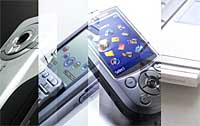 The two companies hope that their service will allow mobile operators to get their grubby mitts on the “growth opportunities for personalised digital entertainment on the mobile phone and PC” and will, no doubt, include the usual slew of lucrative, downloadable offerings like ringtones, master tones, images, wallpaper and video content.
The two companies hope that their service will allow mobile operators to get their grubby mitts on the “growth opportunities for personalised digital entertainment on the mobile phone and PC” and will, no doubt, include the usual slew of lucrative, downloadable offerings like ringtones, master tones, images, wallpaper and video content.
With doe-like eyes, Ericsson CEO Carl-Henric Svanberg praised Napster as “the strongest digital music brand in the world”, adding: “With Napster we are uniquely positioned to deliver the easy to use, complete suite of music offerings our customers are asking for.”
It’s anticipated that the announcement could stir things up in the accelerating mobile music sector, driven ever-onwards and upwards by the growth of high-speed networks in Europe and Asia.
 More and more mobile operators are already cutting themselves a slice of the mobile digital music services pie, with the largest Korean mobile phone operator recently purchasing a controlling stake in the country’s biggest record label.
More and more mobile operators are already cutting themselves a slice of the mobile digital music services pie, with the largest Korean mobile phone operator recently purchasing a controlling stake in the country’s biggest record label.
Napster’s no stranger to the world of mobile music either, offering limited access to its service through selected US phone networks and operating a ringtone download store.
If the joint venture manages to persuade mobile phone operators that customers are going to lurve the integration between handsets and online services, the two companies could be on to a winner.
 T-Mobile USA today revealed that nearly half a million are currently signed up to access their hotspots with hourly, daily, monthly or yearly accounts
T-Mobile USA today revealed that nearly half a million are currently signed up to access their hotspots with hourly, daily, monthly or yearly accounts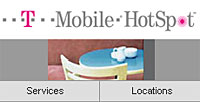 Although many early Wi-Fi adopters were laptop-toting business suits connecting in airports, hotel rooms and lobbies, the demographic is now far broader, with students, music fans, backpackers, silver surfers and others hitting the hotspots with their PDAs, smartphones and laptops.
Although many early Wi-Fi adopters were laptop-toting business suits connecting in airports, hotel rooms and lobbies, the demographic is now far broader, with students, music fans, backpackers, silver surfers and others hitting the hotspots with their PDAs, smartphones and laptops.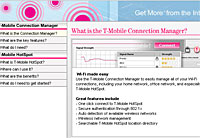 New locations include the provision of roaming access throughout another 39 more airports in North America (making a total of 75 airports covered), with Wi-Fi guest room access being installed at 525 more hotels in the Marriott, Hilton, Ritz-Carlton, Doubletree and Renaissance chains.
New locations include the provision of roaming access throughout another 39 more airports in North America (making a total of 75 airports covered), with Wi-Fi guest room access being installed at 525 more hotels in the Marriott, Hilton, Ritz-Carlton, Doubletree and Renaissance chains.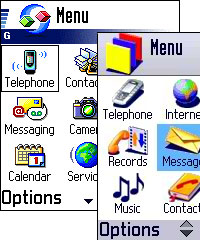 Finnish mobile phone giants Nokia have launched a new Web browser for their Series 60 smartphones.
Finnish mobile phone giants Nokia have launched a new Web browser for their Series 60 smartphones.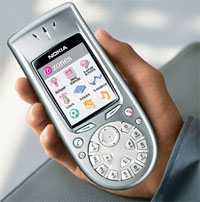 “Nokia is excited to enrich Series 60 with optimised mobile Web browsing. Open source software is an ideal basis for development since it enables Nokia to leverage and contribute to speedy software innovation and development. As a result, the entire Series 60 value chain, from manufacturers and operators to end-users, will benefit from the flexible architecture, full Web compliance and a truly enjoyable user experience,” enthused Pertti Korhonen, Chief Technology Officer, Nokia.
“Nokia is excited to enrich Series 60 with optimised mobile Web browsing. Open source software is an ideal basis for development since it enables Nokia to leverage and contribute to speedy software innovation and development. As a result, the entire Series 60 value chain, from manufacturers and operators to end-users, will benefit from the flexible architecture, full Web compliance and a truly enjoyable user experience,” enthused Pertti Korhonen, Chief Technology Officer, Nokia.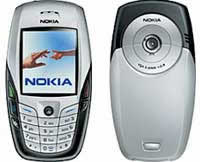 Philip Schiller, Apple’s senior vice president of Worldwide Product Marketing reckons the new browser is the dog’s nadgers: “The Safari Web Kit’s blazing performance, efficient code base and support for open standards make it an ideal open source technology for projects like Nokia’s new Series 60 browser.”
Philip Schiller, Apple’s senior vice president of Worldwide Product Marketing reckons the new browser is the dog’s nadgers: “The Safari Web Kit’s blazing performance, efficient code base and support for open standards make it an ideal open source technology for projects like Nokia’s new Series 60 browser.”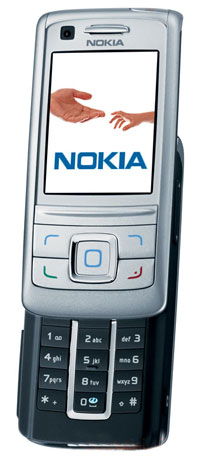 In a veritable orgy of mobile manufacturing, Nokia has launched a grand total of seven new handsets, including a dual camera 3G device and their most feature-rich CDMA phone yet.
In a veritable orgy of mobile manufacturing, Nokia has launched a grand total of seven new handsets, including a dual camera 3G device and their most feature-rich CDMA phone yet.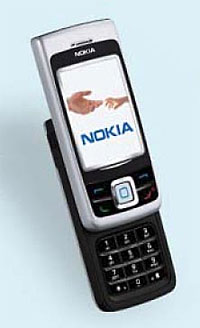 The 3G multimedia-tastic 6280 is a compact WCDMA/EDGE sliding handset sporting a 320 x 240 pixel screen, a 2 megapixel camera (with a VGA front camera for video calls), a removable mini-SD card and a built-in FM radio. It’s expected to appear on the shelves in the fourth quarter 2005 for EUR375.
The 3G multimedia-tastic 6280 is a compact WCDMA/EDGE sliding handset sporting a 320 x 240 pixel screen, a 2 megapixel camera (with a VGA front camera for video calls), a removable mini-SD card and a built-in FM radio. It’s expected to appear on the shelves in the fourth quarter 2005 for EUR375.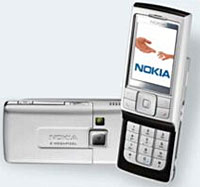 “The growth prospects on the CDMA front are extremely encouraging. The CDMA market is expected to grow at pace with the overall handset market and the global CDMA handset volume is expected to increase by 10 to 15 percent year-on-year in 2005,” he said.
“The growth prospects on the CDMA front are extremely encouraging. The CDMA market is expected to grow at pace with the overall handset market and the global CDMA handset volume is expected to increase by 10 to 15 percent year-on-year in 2005,” he said.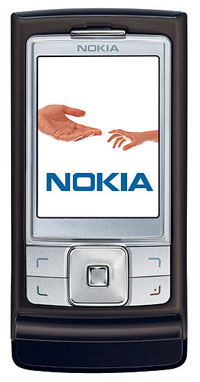 The last of the slider phones is the 6111, which has more than a passing resemblance to the hugely successful i-mate JAM phone, although the screen is much smaller at 128×160 pixels. The camera contains a 1-megapixel camera and 6x digital zoom and retails for around EUR270.
The last of the slider phones is the 6111, which has more than a passing resemblance to the hugely successful i-mate JAM phone, although the screen is much smaller at 128×160 pixels. The camera contains a 1-megapixel camera and 6x digital zoom and retails for around EUR270.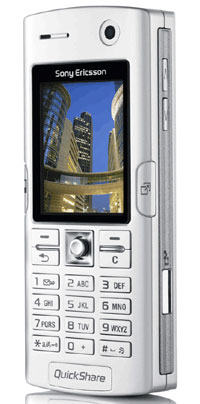 On the same day that Nokia went forth and multiplied with seven new phones, rivals Sony Ericsson announced four new handsets, aimed at increasing its presence in the low end and mid-market sectors.
On the same day that Nokia went forth and multiplied with seven new phones, rivals Sony Ericsson announced four new handsets, aimed at increasing its presence in the low end and mid-market sectors.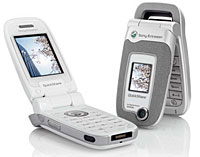 There’s 32MB of memory space on the phone for shunting on ringtones, wallpapers, still shots and video footage, with a built in music player and FM radio taking care of multimedia.
There’s 32MB of memory space on the phone for shunting on ringtones, wallpapers, still shots and video footage, with a built in music player and FM radio taking care of multimedia.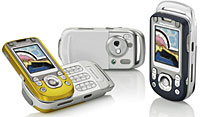 The S600 comes with 64MB of onboard memory, but sadly, there’s no memory card on offer – presumably it’s been left off so as to not compete with the higher spec’ed K750 model.
The S600 comes with 64MB of onboard memory, but sadly, there’s no memory card on offer – presumably it’s been left off so as to not compete with the higher spec’ed K750 model.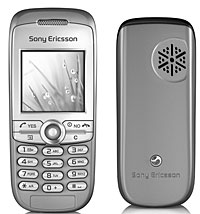 Flipped open, the twin-display phone offers a 1.8″ 128 x 160 pixel, 65k colour, TFT main screen, supported by a 101 x 80 pixel, colour secondary display on the outside.
Flipped open, the twin-display phone offers a 1.8″ 128 x 160 pixel, 65k colour, TFT main screen, supported by a 101 x 80 pixel, colour secondary display on the outside.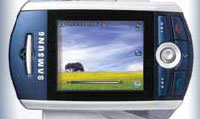 Scheduled for release at the beginning of July is Samsung’s “Web friendly” SGH-Z130 3G handset.
Scheduled for release at the beginning of July is Samsung’s “Web friendly” SGH-Z130 3G handset.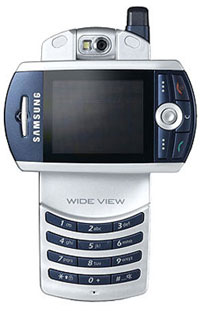 There’s a fair bit of memory on board to handle all the multimedia fluff, with a total of 88.5 MB storage offering 80 MB for Image/Sound/Video, 4 MB for Java, 3 MB for Email and 1.5 MB for MMS with just enough room left over for 200 SMS messages.
There’s a fair bit of memory on board to handle all the multimedia fluff, with a total of 88.5 MB storage offering 80 MB for Image/Sound/Video, 4 MB for Java, 3 MB for Email and 1.5 MB for MMS with just enough room left over for 200 SMS messages.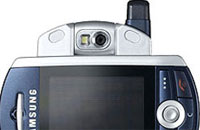 As with earlier versions of Netfront, there is a handy option to render Web pages to fit smaller screen widths, saving a ton of pesky horizontal scrolling.
As with earlier versions of Netfront, there is a handy option to render Web pages to fit smaller screen widths, saving a ton of pesky horizontal scrolling.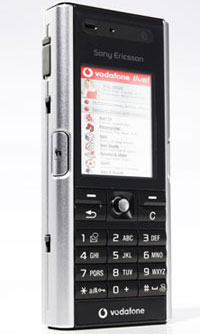 Rather immodestly self-declared as ‘beautifully designed’, Sony Ericsson and Vodafone have announced their new V600i 3G phone.
Rather immodestly self-declared as ‘beautifully designed’, Sony Ericsson and Vodafone have announced their new V600i 3G phone.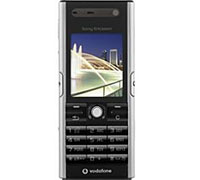 Subscribers can also take advantage of the content streamed from the Vodafone live! site, including live sports and music videos.
Subscribers can also take advantage of the content streamed from the Vodafone live! site, including live sports and music videos. Cutting edge office hipsters keen to perfect that
Cutting edge office hipsters keen to perfect that 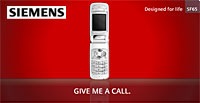 After an eternity of “will they? won’t they?” rumours Siemens has announced that it is to flog its loss-making mobile-phones unit to the Taiwan-based BenQ Group.
After an eternity of “will they? won’t they?” rumours Siemens has announced that it is to flog its loss-making mobile-phones unit to the Taiwan-based BenQ Group. Through the haze of a soft focus lens, Klaus Kleinfeld, the CEO of Siemens AG whispered sweet nothings about his new bedfellow:
Through the haze of a soft focus lens, Klaus Kleinfeld, the CEO of Siemens AG whispered sweet nothings about his new bedfellow: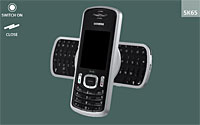 Perhaps a little tipsy from wielding his fearsome buying power, BenQ Chairman & CEO K.Y. Lee roared “With the acquisition of Siemens’s mobile phones business, we are rapidly approaching our goal to become one of the world’s leading players in the mobile phone industry. Our expansion strategy will be strongly supported by this deal, as we can rely on a global organization with excellent employees, a well-established blue-chip customer base in the mobile business and a strong brand with high impact.”
Perhaps a little tipsy from wielding his fearsome buying power, BenQ Chairman & CEO K.Y. Lee roared “With the acquisition of Siemens’s mobile phones business, we are rapidly approaching our goal to become one of the world’s leading players in the mobile phone industry. Our expansion strategy will be strongly supported by this deal, as we can rely on a global organization with excellent employees, a well-established blue-chip customer base in the mobile business and a strong brand with high impact.”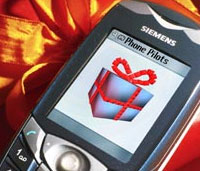 “Siemens will continue to offer its customers in the telecommunications industry one-stop shopping for all their needs. With BenQ, we have found a partner who will supply us with the corresponding products. In addition, we will be collaborating closely in research and development. Moreover, we also intend to utilize synergies in jointly addressing customers and in our selling operations,” commented Lothar Pauly, the CEO of the Siemens Communications Group.
“Siemens will continue to offer its customers in the telecommunications industry one-stop shopping for all their needs. With BenQ, we have found a partner who will supply us with the corresponding products. In addition, we will be collaborating closely in research and development. Moreover, we also intend to utilize synergies in jointly addressing customers and in our selling operations,” commented Lothar Pauly, the CEO of the Siemens Communications Group.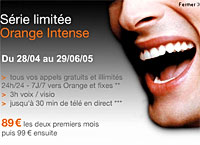 Coming hot on the heels of their 3G Mobile TV launch, Orange France has announced that their high-speed EDGE mobile service for consumers will go live next week.
Coming hot on the heels of their 3G Mobile TV launch, Orange France has announced that their high-speed EDGE mobile service for consumers will go live next week. SFR expects to have scooped up around 500,000 3G subscribers by the end of the year.
SFR expects to have scooped up around 500,000 3G subscribers by the end of the year.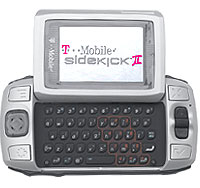 The mobile Internet handset – developed by Danger and manufactured by Sharp Corporation – will be made available on service contract for £68.70 (~€100, ~US$125).
The mobile Internet handset – developed by Danger and manufactured by Sharp Corporation – will be made available on service contract for £68.70 (~€100, ~US$125). The feature-stuffed handset includes a mobile phone, push email, instant messaging, HTML Web browser, text-messaging, calendar, address book, an integrated digital camera and the option to download applications and content.
The feature-stuffed handset includes a mobile phone, push email, instant messaging, HTML Web browser, text-messaging, calendar, address book, an integrated digital camera and the option to download applications and content.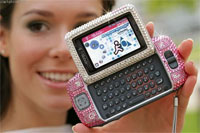 Beating at the heart of the T-Mobile Sidekick II is Danger’s “hiptop” software and services infrastructure.
Beating at the heart of the T-Mobile Sidekick II is Danger’s “hiptop” software and services infrastructure.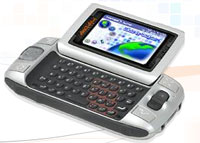 Also known as the Hiptop 2, the 130 x 66 x 22 mm (5.1″ x 2.6″ x 0.9″) handset features a flip Transflective TFT 240×160 pixel screen and an integrated VGA (640 x 480 pixel) camera.
Also known as the Hiptop 2, the 130 x 66 x 22 mm (5.1″ x 2.6″ x 0.9″) handset features a flip Transflective TFT 240×160 pixel screen and an integrated VGA (640 x 480 pixel) camera.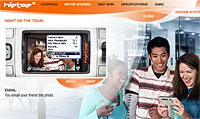 T-Mobile are also releasing a “trendy” version of the Sidekick, resplendent in distinctly un-macho pink sparkly bits.
T-Mobile are also releasing a “trendy” version of the Sidekick, resplendent in distinctly un-macho pink sparkly bits.